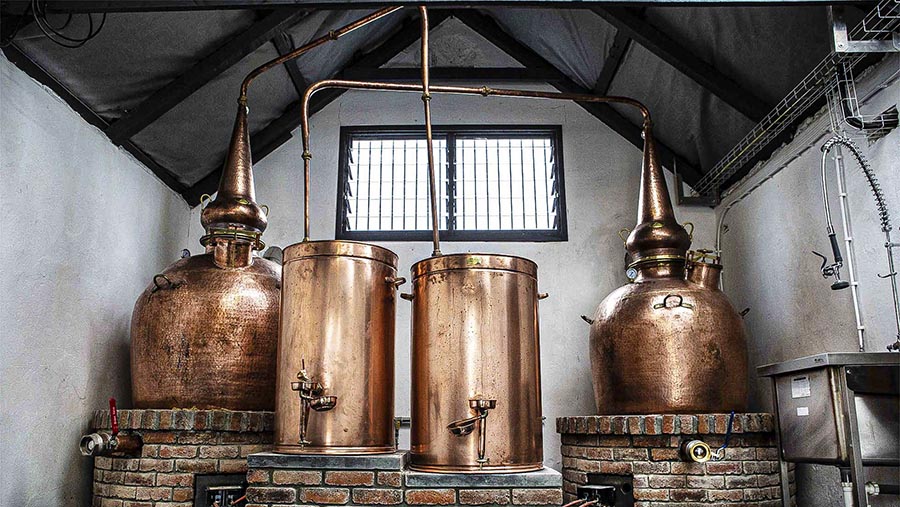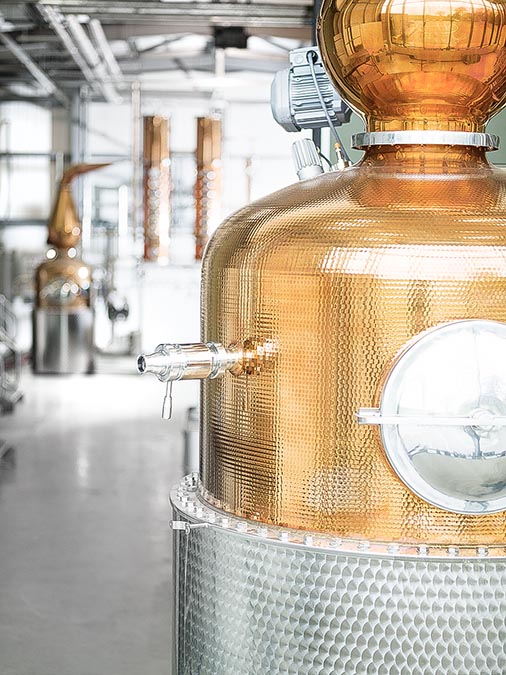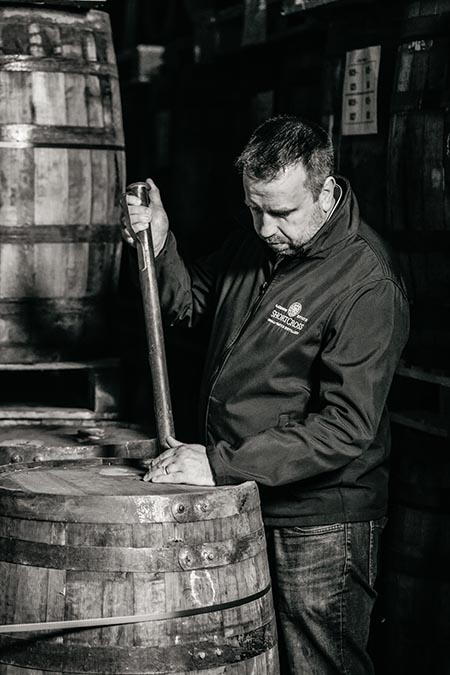There are three sound frequencies in Irish whiskey now. The first is a boom. The second is a song, and the third is something like a low, subwoofer tremor, almost inaudible outside the scene but heralding a coming quake.
First, the boom. Irish whiskey really is booming. It’s booming in the U.S. (41.1% of its total sales), it’s booming in the E.U. (26.2%), and from China to Nigeria, it’s fostering strong markets around the world. Even with the setbacks of the pandemic, according to the Irish Whiskey Association’s 2022 Trade Report, Irish whiskey grew by 21% from 2020 to 2021 and sold 14 million cases globally. That’s up from less than 5 million in 2010, when there were only four distilleries on the island. As of now, there are forty-three.
Then there is the song. Along with the explosive growth of big name blends like Jameson and Tullamore Dew, Irish distilling has seen a reinjection of producer diversity. From the part-Bacardi-owned Teeling Whiskey Company to Diageo’s Roe & Co to an ever-deepening well of independents of all sizes, there is simply quite a lot more choice. With the success of Redbreast and Green Spot, Ireland’s traditional single pot still style has moved from little more than bartenders’ esoterica right into the mainstream shelf.
Outside the premiumization by Bushmills and Midleton of their respective single malt and single pot still ranges, much of this diversity has been driven by creative cask finishing by new entrants from a shared well of stocks (primarily Cooley, Great Northern Distillery, and West Cork Distillers). Listen closer though. Behind the brand pitches, behind the cask finishes, behind the stage veil, an as yet unheard 36-seat-deep distillery orchestra has been recomposing Irish whiskey from the sheet music up.
In 2022, that curtain slipped a bit with warehouse leaks from experimental distillers like Rademon (aka Shortcross), Killowen, Blackwater, and Boann. In a couple more years, it’s likely to fall down. When that happens, there will also likely be a lot of noise.

Which leads us to the subwoofer tremor. In 2023, all four of those distilleries are notorious in Irish geekdom and more or less unknown outside of it. They’re very different to each other, but one striking thing uniting them is that they’ve all distilled single pot still stock not currently in line with legal definitions. Drafted in 2014, the technical file which governs Irish whiskey law defines the pot still category as distilled from a mash of at least 30% unmalted barley and at least 30% malted barley with no more than 5% anything else at all. Other mashes may be distilled, but they must be labelled as generic “Irish whiskey,” a blue-ribbon theft that makes investing in them precarious.
Before the mid-1970s, however, Irish pot still whiskey commonly had heaps of oats (not to mention wheat and rye), a treasured topic for diehard enthusiasts and distillers alike. Many of these silent distillery Irish pot stills are still available as collectibles, and the discrepancy between the classics and the file has been a bone of contention in the trade virtually since the day the laws were drafted.
If there was a news item to watch in 2022, it was the united trade bid to reform those rules at last. The two leading trade groups (the Irish Whiskey Association and the Irish Whiskey Guild) both submitted formal proposals to the Department of Agriculture, including a mutually endorsed amendment to revise the single pot still definition to include up to 30% oats, wheat, and rye. Curiously, while broadening their allowance, the submission actually restricts the choice of adjuncts to the three traditional cereals seen in heritage Irish mash bills. The oats, wheat, and rye may be malted or unmalted.

“It’s been a real journey for all those involved,” says Rademon’s David Boyd-Armstrong, who sat on the Irish Whiskey Association’s internal technical committee and helped draft the formal proposal. “The proposed changes back the mash bill heritage that defined Irish whiskey in the past. To see how that will shape its future is very exciting. Allowing weight to the three heritage adjuncts of rye, wheat, and oats means that the opportunities to create unique styles of Irish pot still whiskey are virtually limitless.” Boyd-Armstrong, whose own rye whiskey was released this year, has already distilled some cracking 25% rye single pot still stocks.

As orchestral as it is, for the moment, this last great noise in Irish distilling will only be heard in stillrooms and warehouses. Most of the distilleries involved haven’t even released their core whiskey yet, and (with the exception of those who were already distilling it, law-be-damned) it will be years before most of this oaten, oily, revivified, reworked, and reimagined ’60s goodness will be disgorged into bottles. But listen close, dear reader, because it’s coming down the tuba.








